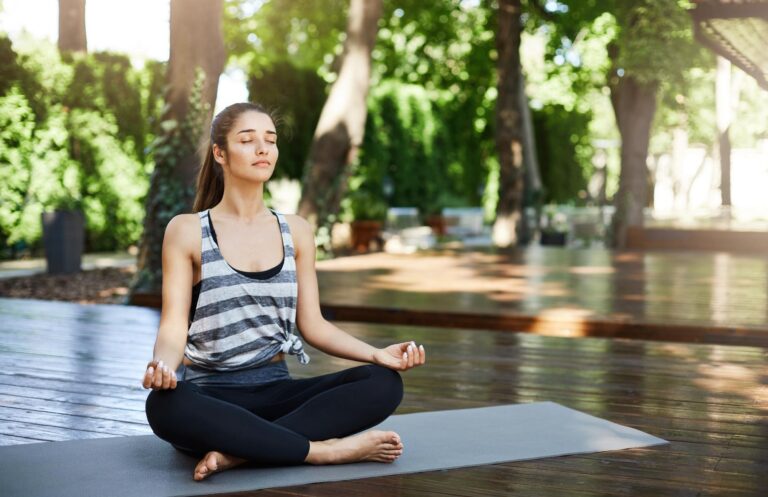Yoga: For A Better Future A Guide To Better Mental Health For A Teenager From A Teenager
In our hectic lives, finding a moment to unwind can feel like an impossible task. The constant reminiscence of the future, academic scores, body image and so many things can create an unending cycle of stress. Breaking free from this cycle is crucial for a person’s mental well-being, and yoga is a highly effective avenue for achieving that.
When one thinks of yoga, a stereotypical image often comes to mind, either of the asanas (poses) or a very flexible individual. However, yoga is more than just an exercise for many; it’s a method to understand your body to a significant extent as well as improve your mental well-being. After six months of consistent practice, I’ve understood the significant effect this activity has. I feel extremely relaxed compared to before, and I realized that this habit has the power to transform an individual’s self-perception. I am not alone in discovering the significant impacts of this magnificent tool; many organizations, such as WHO (World Health Organization), have also spoken about the same, stating, “Yoga is a powerful tool for individuals, communities and countries to improve not only physical but also mental health ”.
Furthermore, yoga serves as a transformative practice, enhancing physical well-being through consistent exercises. One often underestimated aspect of yoga is abdominal breathing, a simple yet powerful technique. According to Mr Narsireddy, a passionate certified yoga teacher, “Breathing exercises are one of the most important parts of yoga, often misunderstood.” In fact, this technique has been scientifically validated by researchers. Biologically, these breathing techniques reduce anxiety by stimulating a parasympathetic nerve present in your nervous system through the vagus nerve. This means that your nerves are active when you take deep breaths more than usual. If your curiosity is lingering, you can try this from exactly where you are! close your eyes, take a deep breath, hold it and count till ten. Try focusing on your breath while doing so. Ideally, you should be feeling much better if you are anxious. This trick is very effective right before a test.
Additionally, Anxiety, characterized by worry and apprehension, can be through breathing exercises. Research by Telles et al. (2011) indicates that high-frequency yoga breathing significantly reduces panic attacks and other anxiety indicators. The breathing exercises also improve attention and visual perception. Isn’t this fascinating?
In comparing meditation and breathing, both practices yield significant effects on biological and mental outcomes. Breathing may be associated with higher energy levels, improved attention, vigor, and alertness, while meditation is linked to serenity and relaxation. For teenagers, the active engagement and increased mental resources brought about by breathing align well with work intention, representing a guide to purposeful action.
Furthermore, while both practices contribute to mindfulness, breathing may be more practical in achieving a state of consciousness emphasizing attention and awareness in the present moment. Breathing-focused yoga practice is particularly effective for teens who find meditation challenging or lack the patience to persist.
In conclusion, yoga, particularly incorporating breathing exercises, emerges as a potent tool for adolescents, facilitating a notable improvement in their overall well-being. Personally, as a teenager, I experienced a positive transformation after engaging in this practice. The sense of confidence and a cessation of overthinking contributed to a profound feeling of vitality. For those grappling with the challenge of persistent overthinking, it is imperative to consider the incorporation of yoga or, specifically, breathing exercises into their routine.
